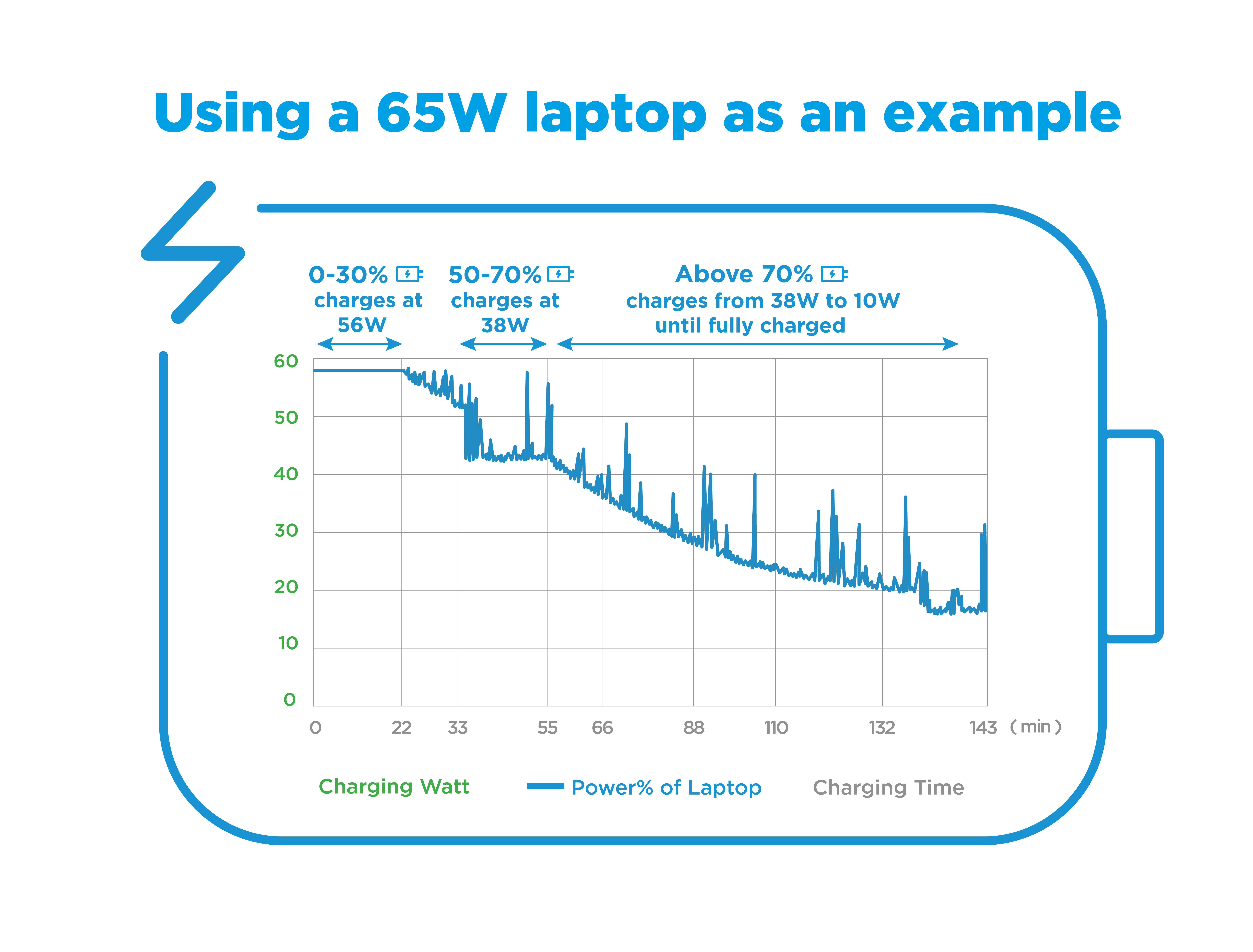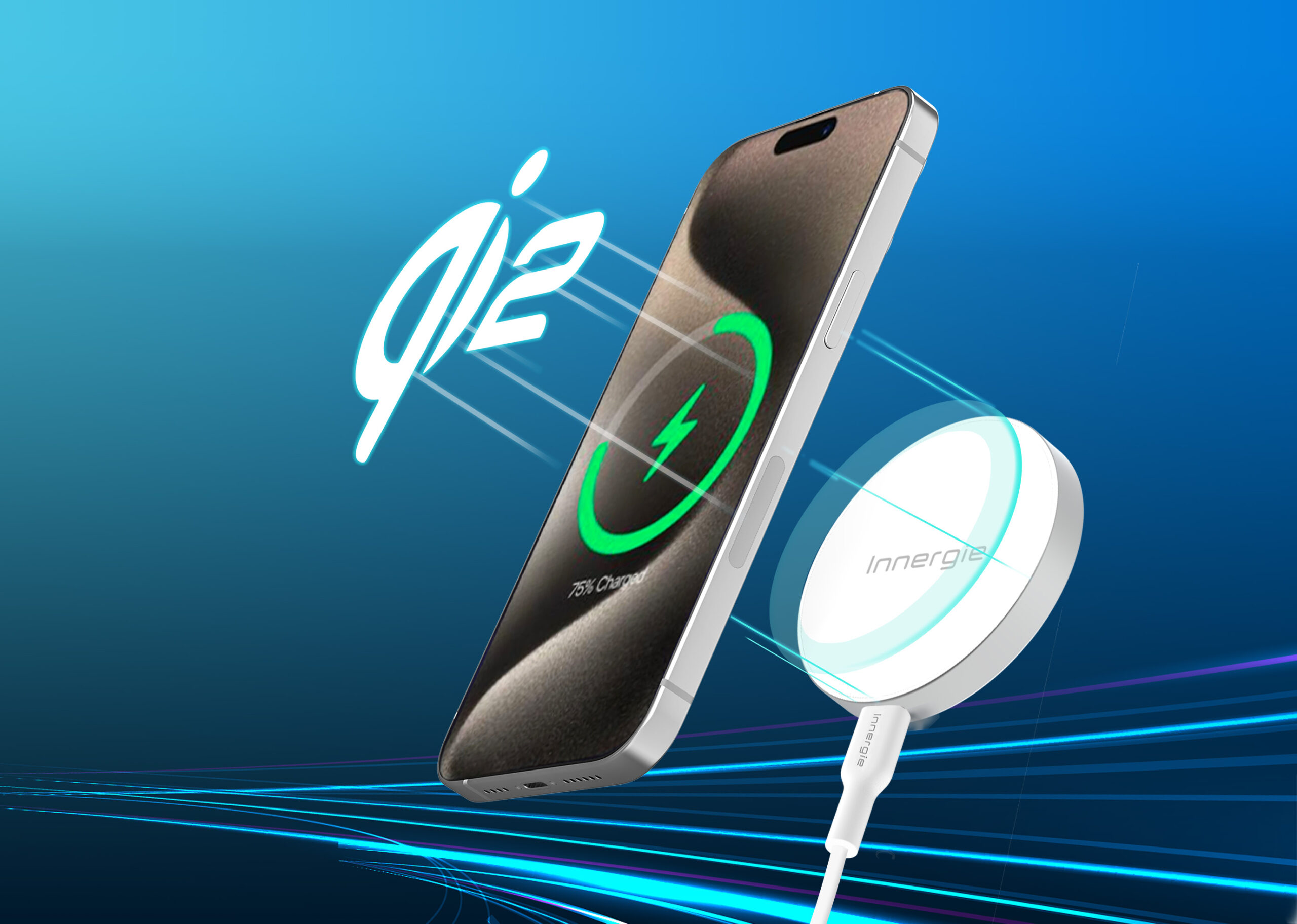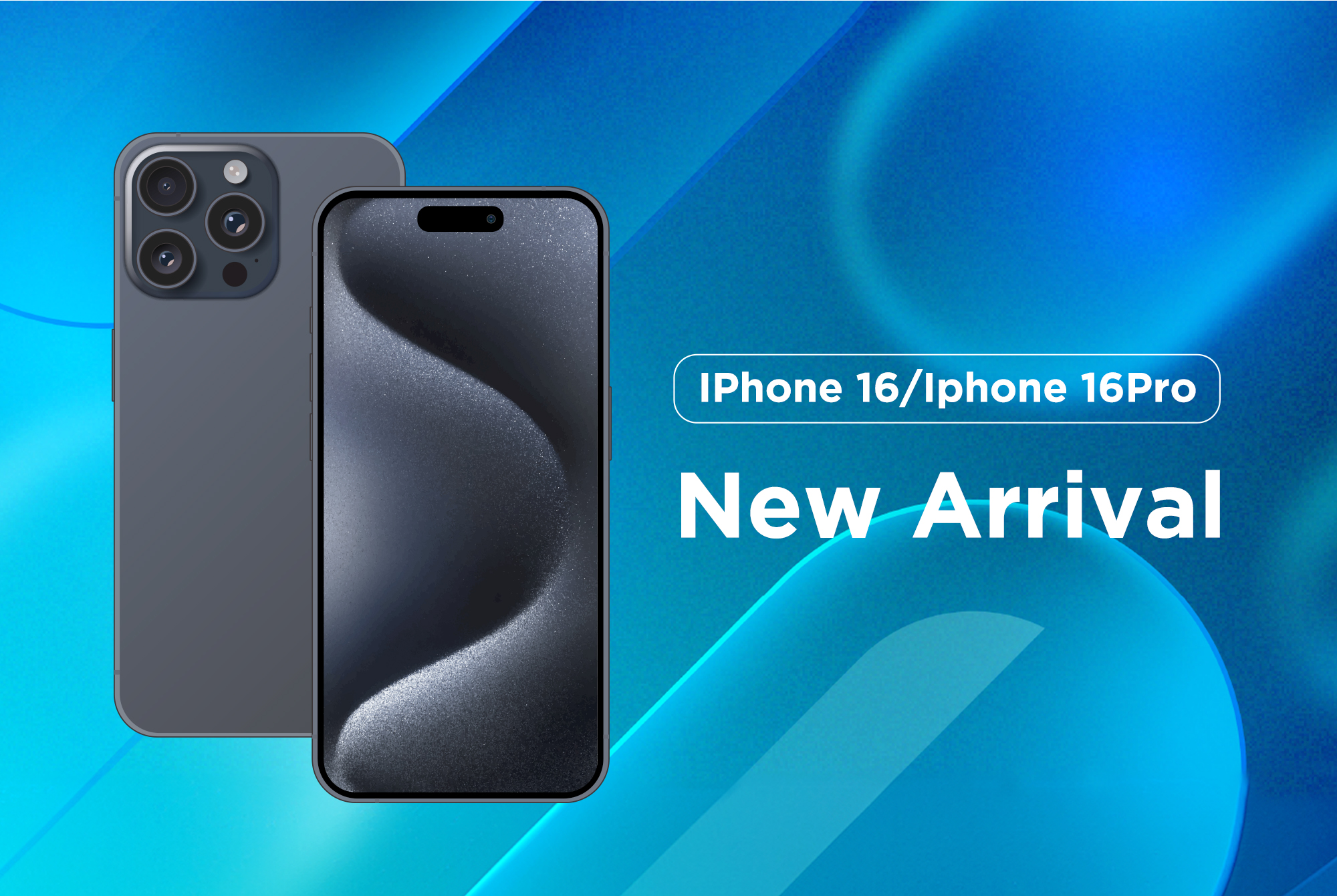Have you ever faced this situation: your laptop is running out of battery, but you only have a phone charger on hand? Can it be used to give your laptop an emergency charge?
The Enigma of Wattage
Let’s start by understanding the differences between “phone chargers” and “laptop adapters.” Generally, phone chargers have lower wattage and cannot meet the power requirements of laptops. If a low-wattage charger is used to charge a high-wattage device, its suitability must be assessed based on the specific circumstances; otherwise, it could lead to overloading the charger, resulting in damage to both the charger and the device, or even pose safety risks. Conversely, high-wattage chargers like laptop adapters usually have “backward compatibility,” meaning they can safely charge lower-wattage devices.
4 Things That Impact Your Charging Speed
1.Battery Management System (BMS):
Most devices come with a built-in Battery Management System (BMS), which communicates with the charger to dynamically adjust charging power based on device requirements and charger specifications, ensuring safe charging.
2.State of Charge:
The BMS adjusts charging power based on the real-time State of Charge (SOC) of the battery. For instance, a laptop’s required charging power varies depending on its battery’s SOC.

3.Load Conditions:
The BMS adjusts charging power based on the device’s load conditions. Charging power may be adjusted accordingly when the device’s battery reaches a certain level.
4. Protection Mechanisms:
The BMS adjusts charging power based on battery temperature to prevent overheating. For example, when the battery temperature is too high, charging may be derated or even stopped. Meanwhile, chargers also have overheating protection based on their own temperature.
In conclusion, if using a smart device with a BMS equipped with charging protocols, it is possible to use a low-wattage phone charger to charge a laptop under specific conditions. However, it is recommended to choose reputable brands that comply with international standards, possess safety certifications, and incorporate safety protection mechanisms. Opting for high-wattage chargers to charge low-wattage devices, along with built-in charging protocols (PD, QC), ensures compatibility with various devices and guarantees charging efficiency and safety. (Read More : How dangerous when using a charger with an unknown certification?)
All Innergie chargers are equipped with the “InnerShield™ Fivefold Safety Protection,” which includes Over Current Protection (OCP), Over Voltage Protection (OVP), Over Temperature Protection (OTP), Over Power Protection (OPP), and Short Circuit Protection (SCP). Innergie will also be launching a new product soon – C10 Duo, can fast charge with 100W with duo USB-C ports! It is perfect for tech enthusiasts, providing ample fast charging power for multiple devices whether at home, on the go, for work, entertainment, or travel needs! Follow us to get the latest update!
Innergie ”One For All” USB-C Fast Charger Series
Innergie Laptop Adapter Series
Innergie Fast Charging Cable Series


